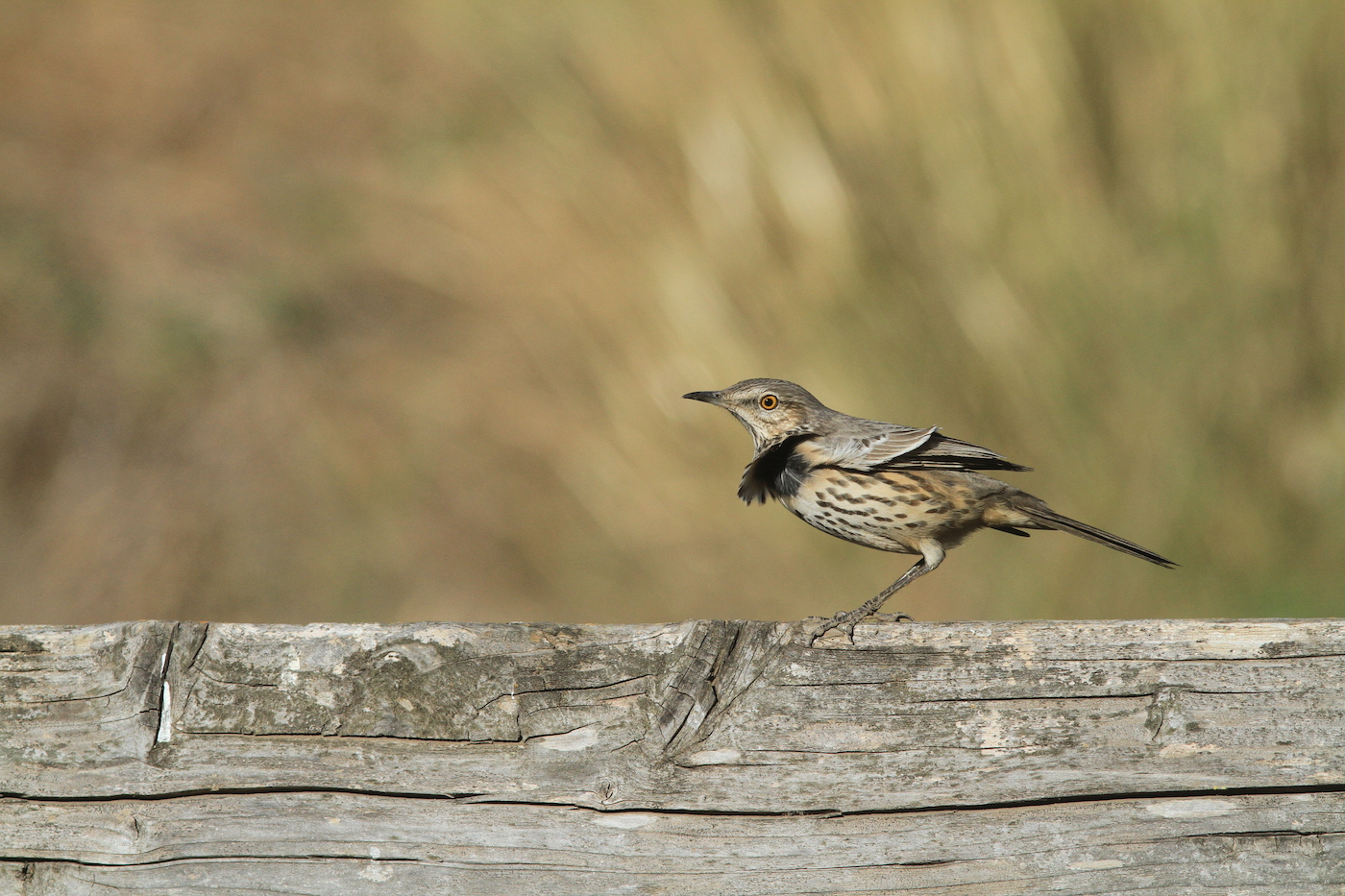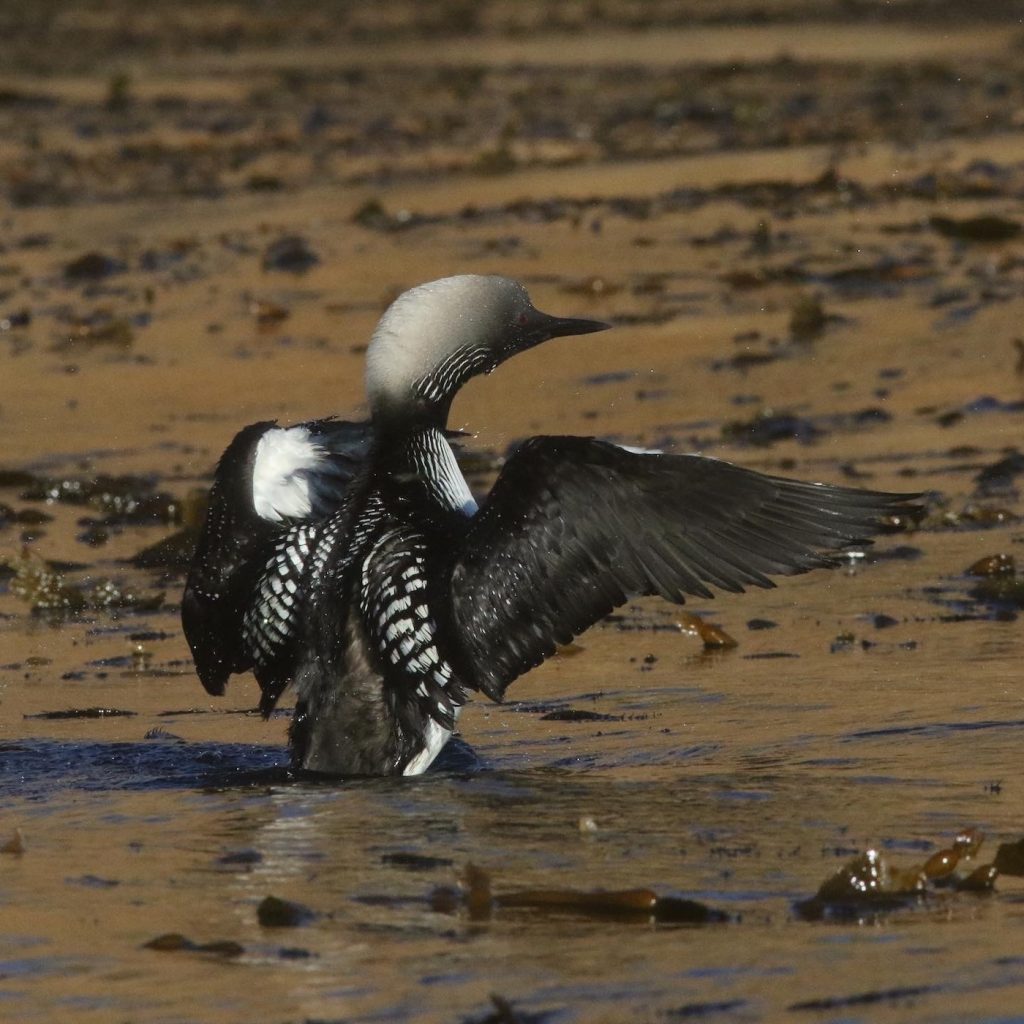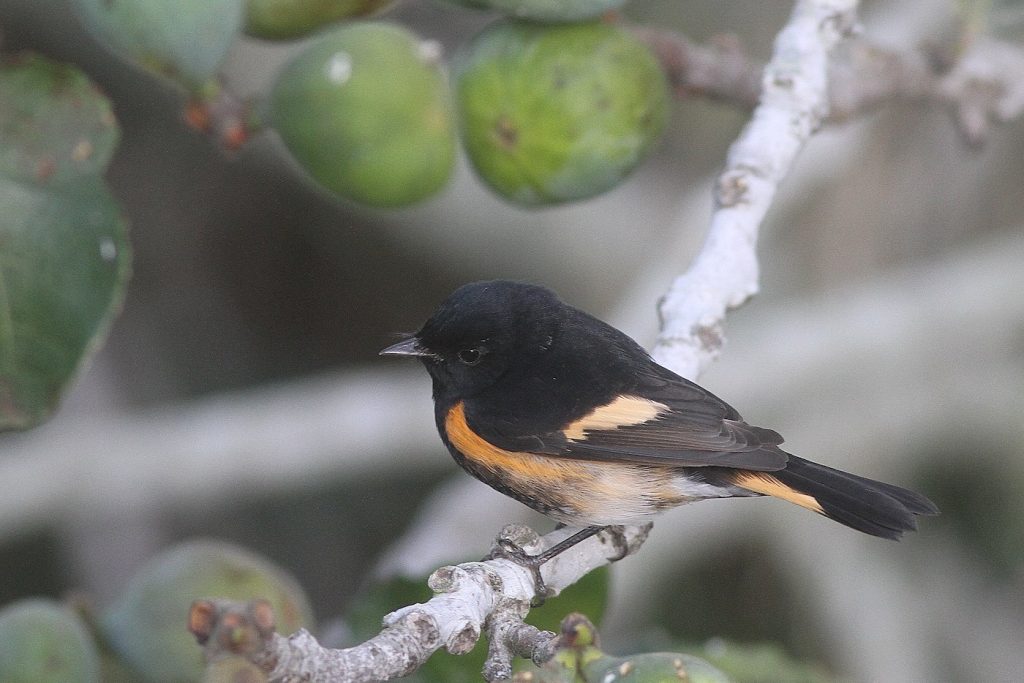Island Refuge

The translucent, salty ocean droplets rolled off its velvety sheen feathers, glistening like crystal clear marbles as it streamed off the back of a wayward Pacific Loon.
It was early summer 2022. Typically, not a time to catch a glimpse of a seabird that should’ve been well north, maybe even as far north as Alaska to nest and rear its brood. Nevertheless, there it was about 50 feet east off the bow of my kayak near Scorpion Anchorage on Santa Cruz Island, the largest isle in the Channel Islands National Park.
Migrant Trap
However, that’s one of the many beauties of the Channel Islands and specifically its Northern Chain. It’s a haven for tired, weather-beaten birds that get blown off course during their arduous migratory routes. The Santa Barbara Channel can be a cruel, unforgiving pelagic locale for migrating birds.

Anacapa, Santa Cruz, Santa Rosa, and San Miguel islands deliver a reliable reprieve from sometimes unpredictable weather. So, when leading kayak tours at the Channel Islands National Park, I always keep an eye out (and ears open) for anything out of the ordinary. I can pretty much count on California brown pelicans, black oystercatchers, and pelagic and Brandt’s cormorants. They are there year-round along with ever-present western gulls and raucous ravens.
During fall and spring migrations, myself and a few other guides are on a heightened alert for birds taking a break on “the Galapagos Islands of the North.” It’s a fitting moniker for one of the most biodiverse chain of islands in the world. Over the years, the list of migrants amongst the guides continues to grow. It gets a little exciting during those migrations when something other than the norm touches down in the Scorpion Anchorage/Canyon region. Some of my favorite birds must not only be seen, but also photographed. It makes it that much sweeter.
Some of those avian species include mountain bluebird, red-naped sapsucker, ovenbird, burrowing owl, American redstart, western tanager, sage thrasher, black-throated blue warbler, red-breasted nuthatch, bobolink, wandering tattler, yellow-rumped warbler, Canadian goose, surfbird, short-eared owl, and an array of sparrows, just to name a few.
Alone but Not Lonely
All my shots of the Pacific loon were from a kayak. It must’ve enjoyed its time in the Scorpion Anchorage region because it stuck around for the first three weeks of June. Back in the fall of 2018, three Pacific loons showed up in the same region. They didn’t hang around nearly as long as this lone loon, and this solitary seabird was more approachable.
Every time I paddled to go look for it, I was expecting it to have finally moved on, that innate tug drawing it northbound to “the Last Frontier.” On the flip side, I was also stoked to see it each occasion. It frequented a secluded little cove and a small pocket beach just west of Scorpion Rock. Each time I kayaked there it appeared to be relishing in its stay.
Waves of varying size constantly collide there between Scorpion Rock and Santa Cruz Island, swell from the northwest and the southeast converging to create a permanent, shallow sandbar. There is a lot of ebb and flow there, and during those three weeks that sandbar became its reliable hunting grounds, crabs and small fish were always on the menu.
One of my favorite moments photographing that lone Pacific loon was following its repetitive dives while I paddled nearby. After each extended dive it would rear up extending its neck skyward, spread its dark wings, and shake off droplets of water. I also enjoyed its stunning emerald-green neck when the sun hit it just right. On days of great water clarity, I could see it 20 feet down knifing through the water, wings tucked in, and propelled by its webbed feet.
Each time I left it, it felt like it would be the last. Maybe I went to Alaska before it did. I left on June 16, 2022. I saw lots of birds there in the far northeast of the state, and as we approached the Beaufort Sea well above the Arctic Circle by raft, I kept an eye out for any Pacific loons. I didn’t see any on that two-week excursion and wondered if that loon was still there enjoying that scenic cove on the southeast fringe of Santa Cruz Island.
When I returned to Scorpion Anchorage the first week of July, some of the guides informed me of all things island fauna during my two weeks away. And of course, the conversation included that Pacific loon. They all told me it moved on right after I departed. We both headed north, except for me; I felt that innate tug to return south.








